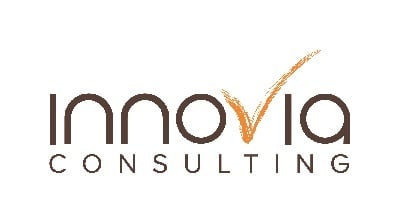In the rapidly evolving business landscape, efficiency is paramount, especially when it comes to tax compliance. Managing returns and filings manually, along with keeping up with ever-changing tax laws, can significantly drain resources. However, implementing sales tax compliance software can alleviate these challenges, streamline operations, and protect your business from the costly risks of noncompliance.
The question then becomes, how much is your current tax compliance process costing you, and where can you optimize for better efficiency? This is where the value of a comprehensive Return on Investment (ROI) or Total Economic Impact™ (TEI) study becomes apparent.
Consider how frequently businesses assess the efficacy of their solutions. It's not uncommon for companies to focus solely on the upfront costs when entering or renewing contracts. Some may continue with a service simply because it frees their workload without delving into a detailed cost-benefit analysis. Yet, understanding the full economic impact of a solution is often a complex task that can fall by the wayside in the face of more pressing duties.
It is prudent to evaluate the effectiveness of your tax solution periodically—at least annually or biennially. As business needs and budgets evolve, promptly addressing misalignments is far more effective than persisting with a suboptimal solution over the years.
Ultimately, while your solution may address a specific problem, it is crucial to weigh its benefits against the costs incurred. A thorough ROI or TEI study highlights areas for improvement and reinforces the value of your investment in sales tax software.
Consider the analogy of investing in a high-end lawn mower to expedite your spring lawn care. It seemed like a time-saver, but soon, you realized the lawn mowing frequency didn't justify the expense. When you factor in the costs of fuel and upkeep, the initial time-saving benefits may not equate to a wise investment. Instead, opting for a local mowing service that operates on an as-needed basis could offer time savings without the hefty price tag and ongoing costs.
This scenario mirrors the evaluation process for your sales tax software. While it's designed to save time and reduce expenses, assessing whether it's delivering on its promises is crucial. Beyond time savings, consider the financial benefits of avoiding audits, penalties, and extensive manual labor.
Is your sales tax solution a long-term asset? Visual aids like graphs and charts can help determine this. A software solution might have a substantial initial cost but negligible maintenance expenses. Conversely, a seemingly affordable option might require extensive manual intervention to function correctly. Assessing the long-term economic impact of these solutions is essential; it's not just about the initial outlay but also the ongoing time and labor investment.
Moreover, the scalability of your sales tax software is vital. Can it adapt and integrate with your current and future systems? A flexible solution that seamlessly meshes with your evolving business infrastructure can minimize friction and deliver sustained ROI year after year.
Understanding the Return on Investment (ROI) for your sales tax software is akin to conducting a thorough financial analysis. Imagine a consultancy like Forrester Consulting examining real-world customers to develop a composite organization. This model is the basis for calculating the tangible benefits customers derive from a solution. Through meticulous analysis, they craft a Total Economic Impact™ (TEI) study reflecting their findings.
An ROI study for tax solution software can pinpoint potential savings in tax compliance tasks such as:
• Efficiently filing tax returns
• Streamlined management of exemption certificates
• Enhanced preparedness for audits, thereby dodging penalties
• Reduced reliance on external tax experts
• Up-to-date research on taxability rules, rate tables, and maintaining current knowledge
Moreover, an ROI study may uncover intangible advantages, like diminishing sales tax liabilities and reallocating focus towards strategic business initiatives rather than tax decisions.
The Role of Automation Manual sales tax management is not only labor-intensive but also prone to errors, which can be costly. Automation serves as a powerful tool, enabling businesses of all sizes to maintain compliance and sidestep expensive errors and penalties. It empowers leaders to concentrate on driving business success rather than entangling themselves in the complexities of tax compliance.
Experience the Impact: What does an ROI study entail? Avalara initiated a study with Forrester Consulting to gauge the Total Economic Impact™ (TEI) of Avalara. Dive into The Total Economic Impact™ of Avalara to discover how our solutions facilitate time savings in managing, streamlining, and filing tax returns; how they eliminate the need for managing exemption certificates manually; how they enhance audit preparation efficiency; and how they reduce the expenses associated with hiring third-party tax experts.
Discover new tax rates, explore adjustments in the sales tax base, and stay ahead of the curve. Don't miss out on this opportunity to empower your business strategy – join our webinar on September 19, 2024!






